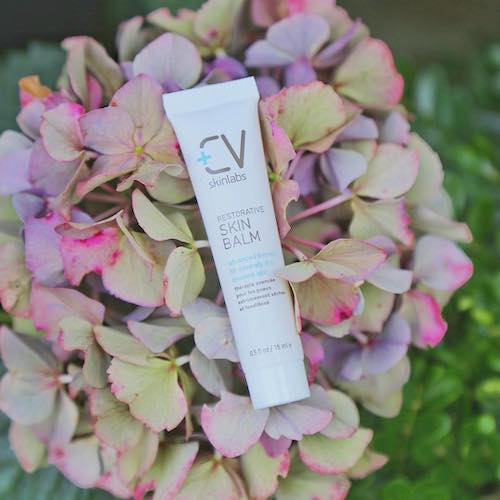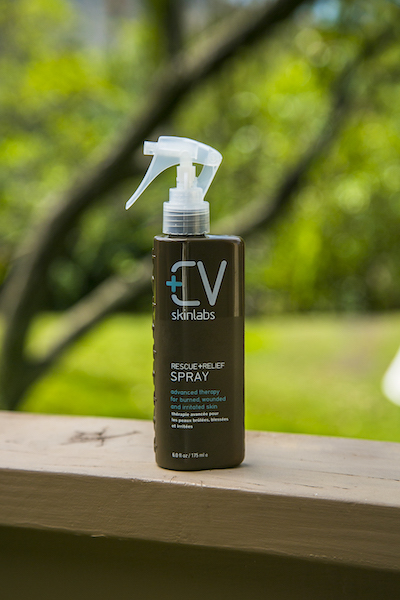If you’ve ever suffered from a heat rash, you know what it feels like.
Is called. Stingy. Prickly.
Also called “prickly heat,” it’s something you’ll want to get rid of quickly.
We have some tips on how to do that.
What is a heat rash?
Heat rash is most common in hot, humid weather. They develop on areas of the body where you are likely to sweat. A lot of.
Heat rash occurs when the sweat ducts become inflamed and blocked, which can happen during times of excessive sweating. Instead of evaporating, the sweat gets trapped under the skin. That leads to irritation.
Dermatologists classify heat rash by how deep the blockage is.
- Mild (Miliaria Crystallina): The opening of the sweat duct on the surface of the skin is blocked. The rash is characterized by small, clear, fluid-filled bumps that break easily.
- Moderate (Miliaria Rubra): The sweat duct is blocked deeper in the skin, below the surface layer. It creates small, inflamed blister-like bumps. It causes itching or stinging sensations.
- Pus-filled (Miliaria Pustolosa): An aggravated form of miliaria rubra, this heat rash causes the inflamed bumps to fill with pus.
- Severe (Miliaria Profunda): This affects the deepest layer of the skin. It causes firm, painful or itchy, inflamed bumps that resemble goosebumps. These bumps can break open.
On lighter skin, heat rash causes bumps surrounded by red, irritated skin. On darker skin tones, the bumps may appear gray, purple, or white. In some cases, a heat rash on dark skin can cause hyperpigmentation: changes in skin color that last for several weeks or months after the rash has healed.
A heat rash usually lasts about 2-3 days. More severe heat rash can last up to a few weeks without treatment.
What increases the risk of heat rash?
Heat rash is estimated to affect 4-9 percent of newborn babies because their sweat glands are not yet fully developed. But also the situation almost hits 30 percent of adults live in humid climates.
Factors that can increase the risk of heat rash include:
- Live in a warm, humid climate
- Being physically active on a hot day
- Being prone to heavy sweating
- Having a fever
- Being on bed rest
What Are the Signs of Heat Rash?
The first sign of a heat rash is usually a stinging, warm feeling. Heat rash tends to itch a lot! You may notice clusters of small, inflamed, blister-like bumps or clear, fluid-filled bumps.
Without treatment, the rash can spread to other nearby areas of the skin. This is due to clogged sweat ducts. (Note: Heat rash is not contagious.) To stop the spread, it is important to cool down quickly.
Heat rash usually develops in skin folds and areas where clothing rubs against the skin. Typical areas include the back, abdomen, neck, upper chest, groin, armpits, inner thighs, under the breasts, in the elbow creases, and on the back of the knees.
What is the fastest way to get rid of heat rash?
There is no standard treatment for heat rash. That’s because once you cool down, it usually goes away on its own.
1. Rapid cooling
You can speed up the healing process in several ways. Start by taking the following steps to cool down quickly:
- Move to a cooler, drier place.
- Take a cool shower or bath. Add colloidal oatmeal if you want to reduce itching.
- Change your clothes if you can.
- Drink a lot of water.
- Avoid scratches.
2. Soothe the itch
The next step is to soothe the itchy or stinging sensation. You can start by applying a cool, damp cloth or ice pack wrapped in a thin towel to the area for up to 20 minutes.
3. Avoid the wrong products!
Once you’ve cooled and patted the affected skin dry, it’s time to treat the rash. Avoid using baby powders as they can contribute to clogged pores, making the rash worse. Also, avoid ointments or lotions with petroleum jelly ingredients (such as mineral oil), as these can also clog your pores and make the rash worse.
Avoid creams or ointments that contain synthetic fragrances. These can often irritate the raw, red skin, making the heat rash worse.
Finally, be careful with hydrocortisone cream. Hydrocortisone is a steroidal anti-itch medication. It may help soothe itching in some people, but it can cause side effects that further irritate the skin. If you decide to try it, use a cream instead of an ointment. Ointments often contain petroleum jelly ingredients that can further block the sweat glands.

4. Use CV Skinlabs products
All of our CV Skinlabs products are non-clogging, which means that unlike some other creams and lotions, they will not further clog the sweat glands. Furthermore, they contain heat-dissipating and anti-inflammatory ingredients that will help speed up the healing of your heat rash.
Choose from the following options, or feel free to use them all:
- Rescue and relief spray: Use this product first. It provides instant cooling and also reduces inflammation and itching.
- Soothing moisture: Then apply Calming Moisture to the affected area. It will help tame redness and promote healing.
- Restorative skin balm: This steroid- and petrolatum-free ointment soothes the skin, reduces inflammation and soothes irritation and swelling.
Our products are safe for the whole family, even expectant mothers and newborns.
How do I prevent a heat rash?
If you know you’ll be working or exercising in the hot sun, try the following tips to avoid heat rash:
- Wear loose-fitting clothing made of natural, breathable fibers such as cotton.
- If you sweat a lot, cool off with fans, showers and air conditioning.
- Try to avoid working outside during the hottest time of the day, usually between 10 a.m. and 3 p.m.
- Avoid using pore-clogging creams and ointments (such as petroleum jelly products).
- Be careful with medications that can cause sweating, such as beta-blockers and opioids.
Should I Call My Doctor About Heat Rash?
In most cases, your heat rash will go away in a few days. If it’s still there four or more days later, or if you notice the following symptoms, call your doctor. In the meantime, continue treating the rash with the tips above.
- The rash is very painful or itches intensely.
- The rash is bright red or streaked.
- The irritated bumps leak pus or form crusts.
- You develop an infection in the area of the rash. (Look for swelling, redness, pus, and yellow fluid in the bumps.)
- You have a fever or experience other symptoms of illness.
- The rash does not go away after a week or two.
Do you suffer from heat rash?
Featured image by Dimitris Vetsikas from Pixabay.






